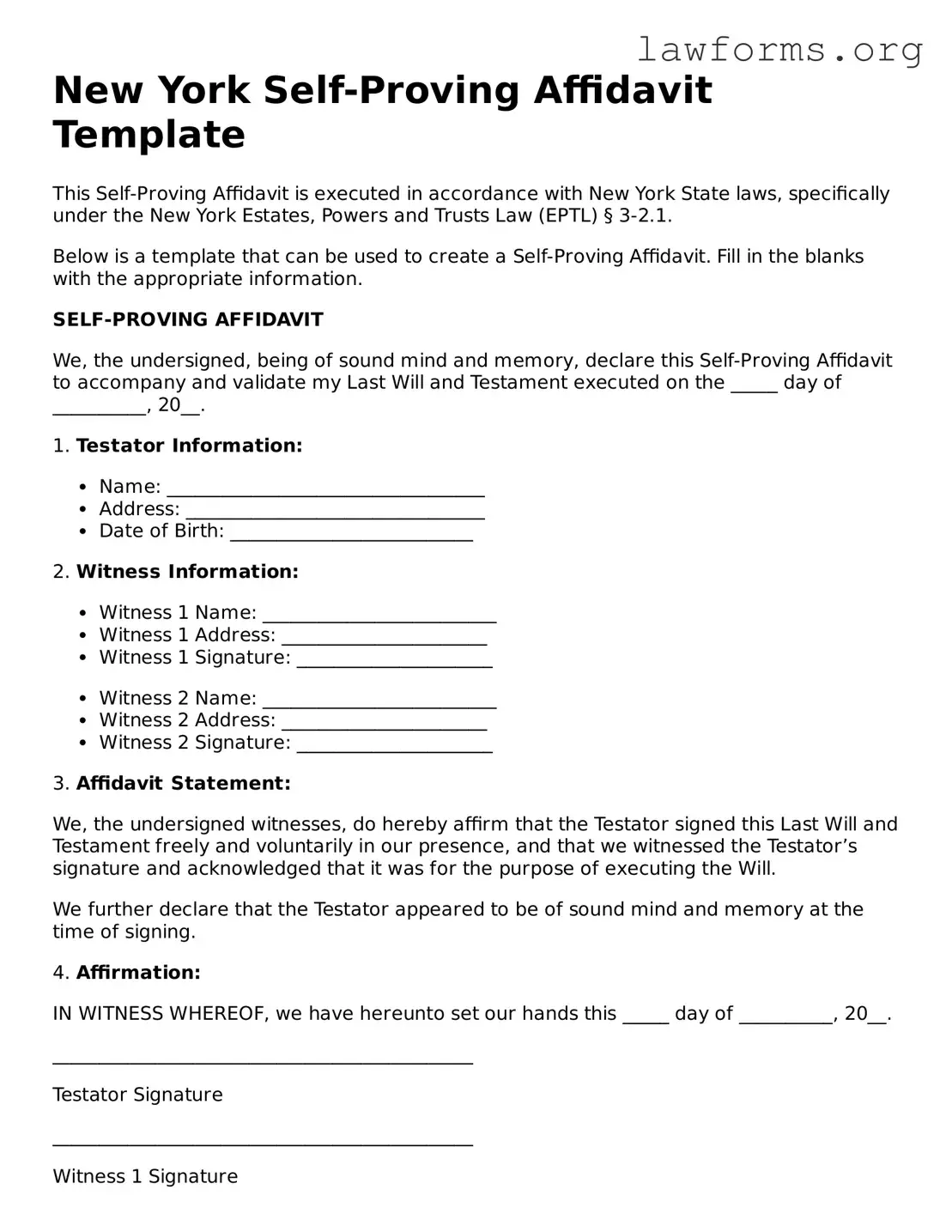New York Self-Proving Affidavit Template
This Self-Proving Affidavit is executed in accordance with New York State laws, specifically under the New York Estates, Powers and Trusts Law (EPTL) § 3-2.1.
Below is a template that can be used to create a Self-Proving Affidavit. Fill in the blanks with the appropriate information.
SELF-PROVING AFFIDAVIT
We, the undersigned, being of sound mind and memory, declare this Self-Proving Affidavit to accompany and validate my Last Will and Testament executed on the _____ day of __________, 20__.
1. Testator Information:
- Name: __________________________________
- Address: ________________________________
- Date of Birth: __________________________
2. Witness Information:
- Witness 1 Name: _________________________
- Witness 1 Address: ______________________
- Witness 1 Signature: _____________________
- Witness 2 Name: _________________________
- Witness 2 Address: ______________________
- Witness 2 Signature: _____________________
3. Affidavit Statement:
We, the undersigned witnesses, do hereby affirm that the Testator signed this Last Will and Testament freely and voluntarily in our presence, and that we witnessed the Testator’s signature and acknowledged that it was for the purpose of executing the Will.
We further declare that the Testator appeared to be of sound mind and memory at the time of signing.
4. Affirmation:
IN WITNESS WHEREOF, we have hereunto set our hands this _____ day of __________, 20__.
_____________________________________________
Testator Signature
_____________________________________________
Witness 1 Signature
_____________________________________________
Witness 2 Signature
5. Notary Public:
State of New York
County of _____________________
On this _____ day of __________, 20__, before me, a Notary Public in and for the State of New York, personally appeared the above-named Testator and witnesses, and they acknowledged to me that they executed the foregoing instrument.
_____________________________________________
Notary Public Signature
My Commission Expires: _____________
